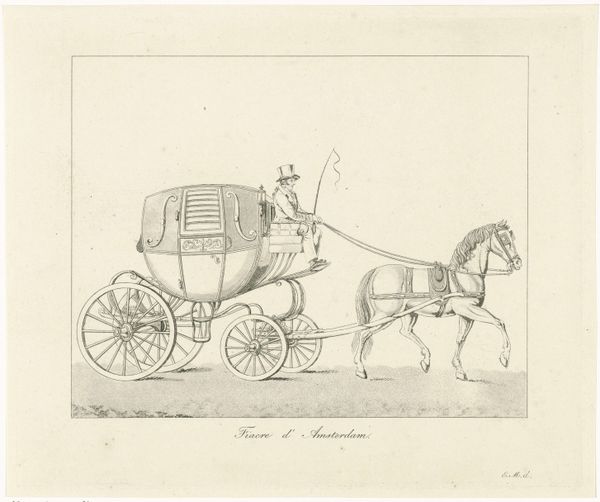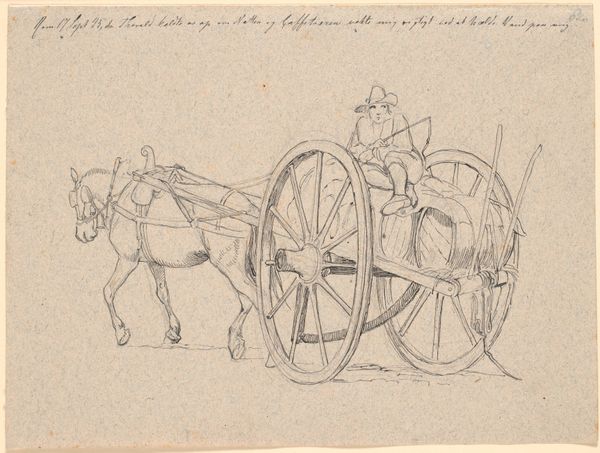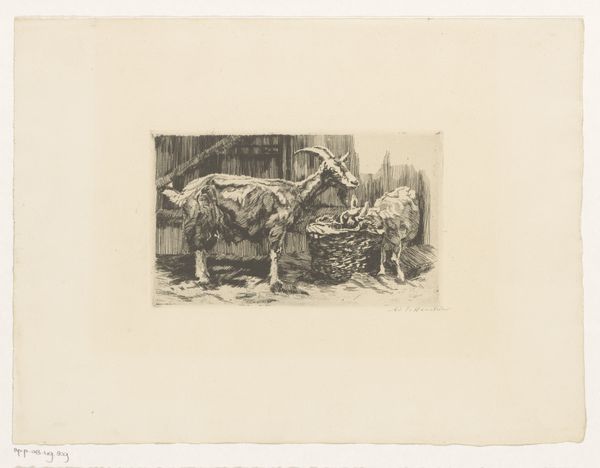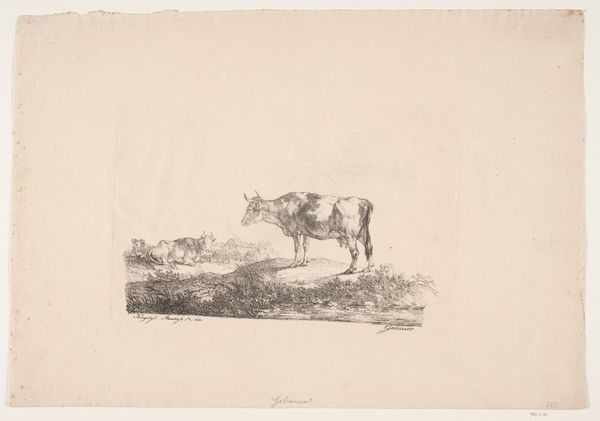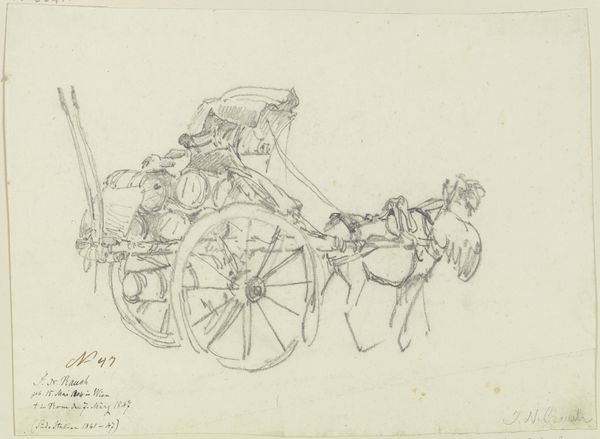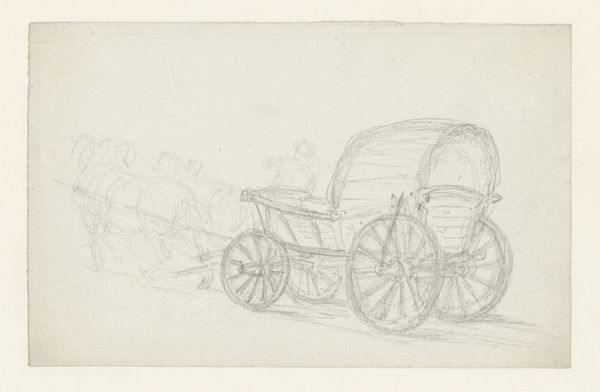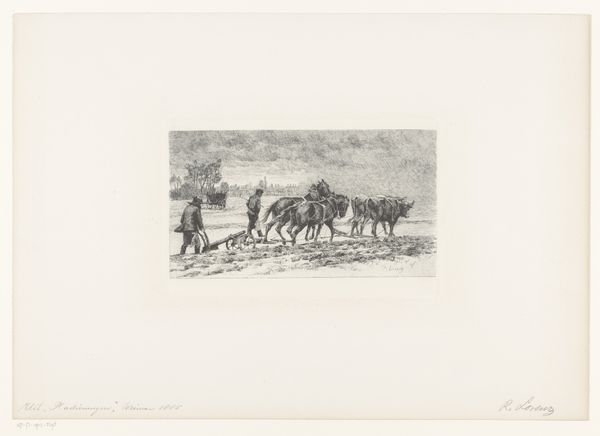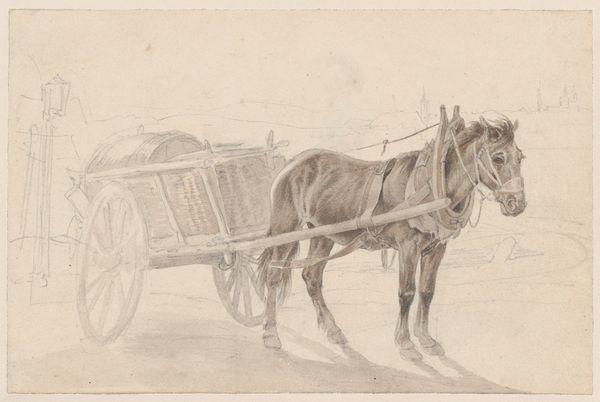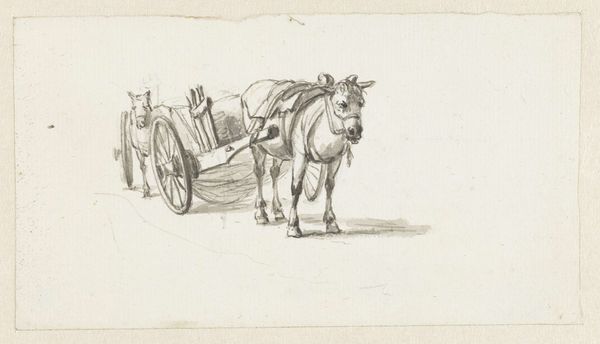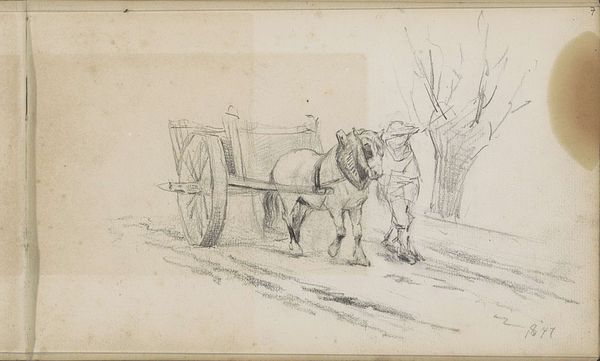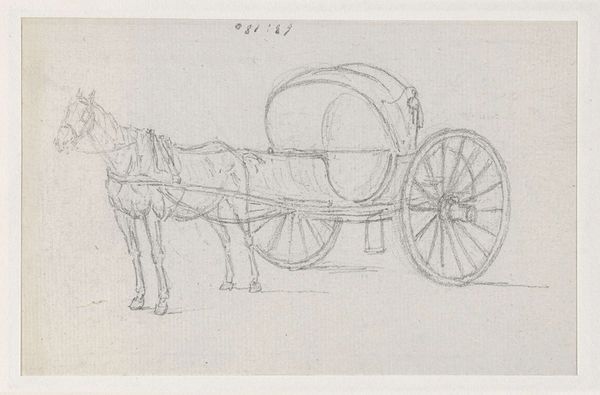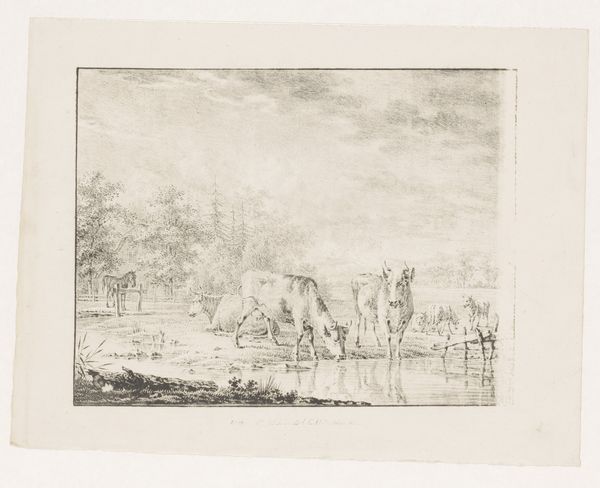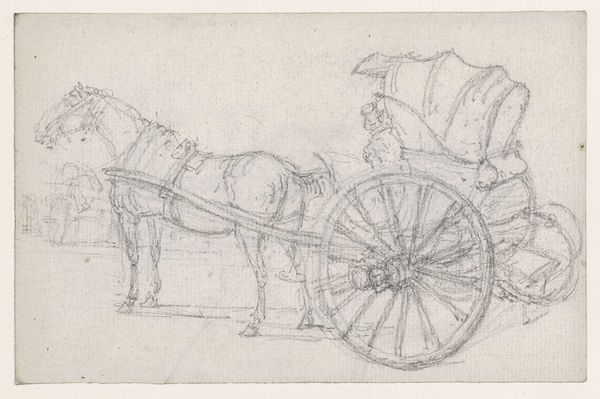
#
light pencil work
#
pen sketch
#
pencil sketch
#
personal sketchbook
#
ink drawing experimentation
#
pen-ink sketch
#
horse
#
sketchbook drawing
#
pencil work
#
storyboard and sketchbook work
#
sketchbook art
Dimensions: height 162 mm, width 232 mm
Copyright: Rijks Museum: Open Domain
Curator: This delicate sketch is "Dead Horse on a Cart," created in 1846 by Johan Thomas Lundbye. It resides here at the Rijksmuseum. What strikes you first? Editor: The starkness of it, honestly. The light pencil work gives it an almost ghostly quality, a transient feeling. And of course, the obvious grim subject matter. Curator: Yes, and Lundbye, though known for his landscapes, wasn’t afraid to confront harsher realities. He clearly focused on capturing the material reality of the dead animal: how the body hangs, the texture of its coat, the weight bearing down on that humble wooden cart. You can almost feel the grit of the road. Editor: Exactly. I find myself wondering about the societal implications, who this horse served, the role of animals within 19th-century labor. Is this drawing a commentary on their expendability or a simple document of a common occurrence? How would his audiences interpret it, what were the prevailing social narratives surrounding working animals and death? Curator: Well, Denmark in the mid-19th century was undergoing significant agricultural reform. The peasant class had complex ties to the land, so the horse probably represented a means of subsistence. This sketch might have triggered varied feelings dependent upon individual viewers' socio-economic status, as you pointed out. Lundbye would certainly be aware of the role of imagery, how this work and where it appeared shaped public views on labor practices. Editor: Looking closer, the human figure is really interesting; almost as subdued and grey as the poor animal. He's not glorified, there's no drama here, he's simply there, attending to the reality of the moment, engaged in the unpleasant task with humble stoicism. It removes some potential romanticizing, doesn’t it? This quiet resignation strikes a profound chord, an acknowledgement of hard labour. Curator: And from a production viewpoint, the artist's chosen medium allows a more authentic lens onto this event. Unlike painting, the raw sketch exhibits pure recording and simple honesty; an intimacy one associates more with a private, personal response rather than that intended for wider display. Editor: I agree, that starkness reinforces the reality while demanding viewers face harsh truths within society and work ethics of the time. I am going away feeling sombre with questions raised around how our engagement of materials intersects and defines human relations. Curator: An appropriate response, I think. Lundbye prompts us to look past surface appearances, pushing past artistic trends for authenticity while questioning his audience values.
Comments
No comments
Be the first to comment and join the conversation on the ultimate creative platform.
